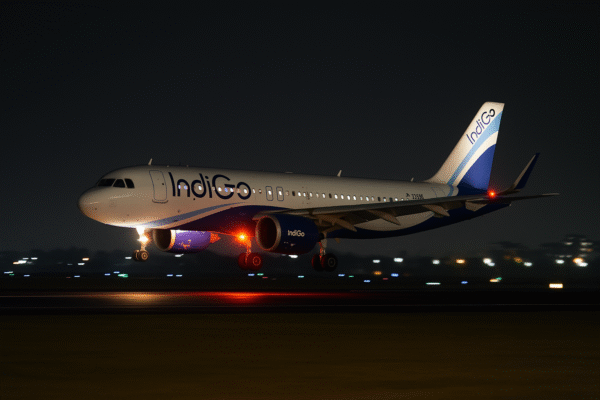In a significant shift that will reshape how non-EU travelers visit Europe, the Schengen Area has launched a streamlined “cascade” system for visa issuance—ushering in a new era of simplified mobility across 27 European countries. This new visa policy, implemented in early 2025, promises to improve access for international tourists and business travelers alike, reducing bureaucratic hurdles while boosting regional tourism and cooperation.
The Schengen Area, comprising most EU nations and a few non-EU members, is known for allowing seamless borderless travel between participating countries. Until now, travelers were required to apply for a visa from either the first country they planned to enter or the one in which they would spend the most time. But under the cascade system, this rigid rule is being replaced with a more adaptable process that simplifies visa selection and approval.
What Is the Schengen Visa Cascade System?
The new cascade model introduces a more flexible hierarchy for applying for Schengen visas. Instead of the traditional requirement to apply through the country of primary stay or entry, the system now allows applicants to file through a broader set of criteria. Travelers uncertain about which Schengen nation they’ll spend the most time in—or those planning multi-country itineraries—can now submit their visa application through a designated embassy with broader entry approval across all member countries.
According to the European Commission, this innovation aims to “increase visa issuance, enhance travel mobility, and reduce inconsistencies in application procedures across Schengen states.”
The change is expected to especially benefit tourists from countries with high demand for European travel—such as India, China, South Africa, and Gulf nations—who often visit multiple destinations in a single trip.
Key Benefits for Global Travelers
1. Easier Multi-Destination Trips:
The cascade system eliminates confusion and multiple application rounds for travelers visiting more than one country. For example, a visitor entering through France and traveling through Spain, Italy, and Austria can now apply with any participating consulate, without prioritizing duration of stay.
2. Boost to Tourism Revenue:
Tourism-dependent economies like Greece, Portugal, and the Czech Republic are expected to benefit from a surge in travelers making multi-country visits. According to Eurostat, the EU hosted over 370 million international arrivals in 2024, and the cascade system could increase this by 5–10% in the next two years.
3. Strengthening Regional Cooperation:
The system promotes harmonization in visa decisions across member states. Smaller countries within the Schengen Zone, often overlooked in rigid travel plans, may now receive more visitors due to easier access.
4. Business Travel Flexibility:
For professionals attending multiple conferences or meetings across the EU, the cascade system drastically reduces logistical challenges. Business travelers will now need only a single application to attend events in multiple countries—enhancing European competitiveness as a global business destination.
Potential Challenges and Concerns
1. Border Security and Monitoring:
An influx of visa holders crossing freely within the Schengen Area will put additional pressure on border security systems. Experts suggest that national authorities will need to reinforce internal monitoring to prevent misuse or overstaying.
2. Uneven Tourism Flows:
Popular destinations like France, Germany, and Italy might see disproportionate benefits, while less-visited countries may continue to struggle to attract tourists unless marketing strategies adapt to highlight their inclusion in broader itineraries.
3. Risk of Visa Fraud or Abuse:
With easier access, authorities must remain vigilant against fraudulent applications. The European Commission plans to integrate the cascade system with the EU’s Entry/Exit System (EES) and the upcoming ETIAS pre-travel screening platform to bolster security.
Digital Integration: EES and ETIAS Tie-In
The cascade reform coincides with the phased rollout of two major EU travel tech initiatives:
- Entry/Exit System (EES): Launching on October 12, 2025, this biometric tracking system will monitor third-country nationals entering and exiting the Schengen Area.
- European Travel Information and Authorization System (ETIAS): A new electronic travel authorization—costing £17 (approx. €20)—that will be mandatory for visa-exempt travelers starting December 2025.
These systems are intended to enhance both traveler convenience and border protection, ensuring a safe and welcoming environment for all visitors.
Cascade Visa Adoption: Early Indicators
France, Spain, and Germany have led early implementation of the cascade policy, reporting increased interest in long-stay and multi-country visa applications from India, the UAE, and Southeast Asia. National tourism boards, such as Atout France and Spain Tourism, have welcomed the reform as “a traveler-first measure” that is already increasing itinerary diversity.
Boutique hotels, cross-border rail operators, and regional tourism boards are collaborating on integrated packages to cater to a growing audience of travelers now empowered to explore Europe more fluidly.
Final Thoughts: A Welcome Evolution for European Travel
The new cascade system for Schengen visas marks a pivotal change in how Europe welcomes global travelers. With simplified rules, centralized processing, and stronger cooperation among countries, Europe is not only making itself more accessible but also more attractive as a cohesive, multi-country destination.
While the system will require ongoing monitoring to ensure fair access and security, it stands as a major step toward a more unified, tourism-friendly Europe.
As the continent continues its post-pandemic tourism recovery, this reform reinforces Europe’s position as one of the world’s most accessible and inviting regions for culture, business, and leisure.
For more travel news like this, keep reading Global Travel Wire



















